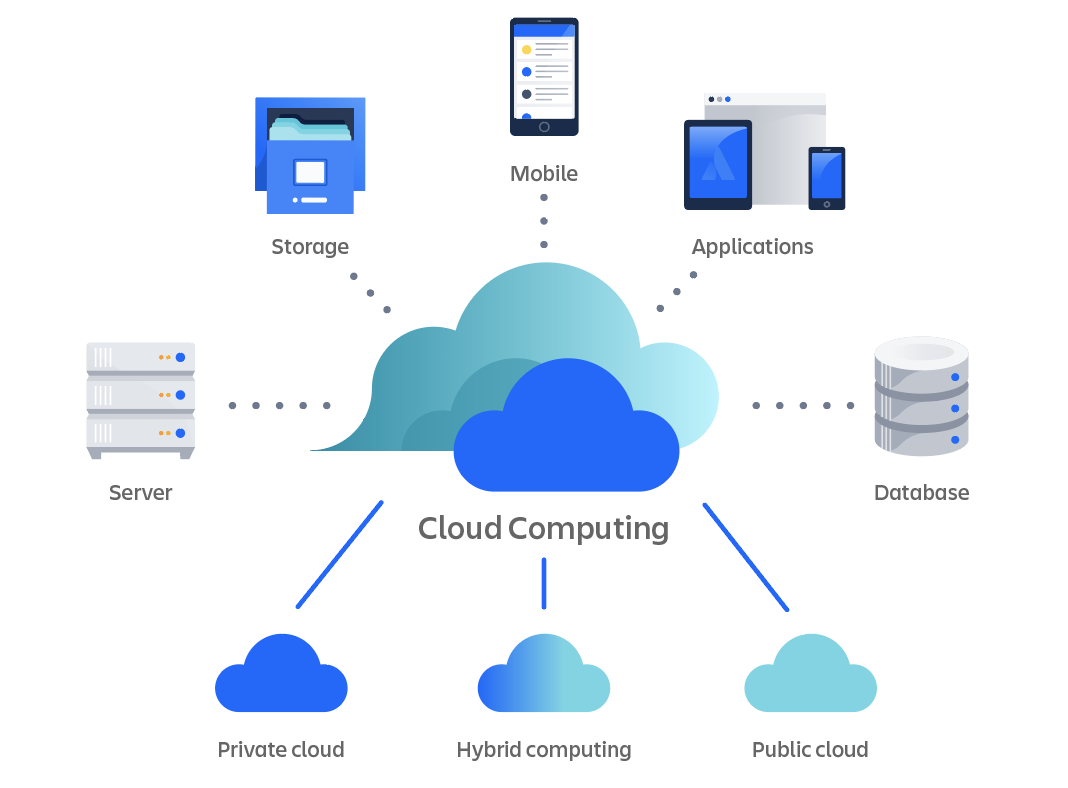Simplify Your Framework With Cloud Services
As organizations navigate the ever-evolving landscape of technology and data monitoring, the duty of cloud services in simplifying facilities has actually come to be progressively famous. Exactly how can companies efficiently browse this transition and absolutely unlock the potential of cloud services for streamlining their framework?
Benefits of Cloud Solutions
Cloud solutions provide a streamlined strategy to managing IT infrastructure, offering businesses with cost-efficiency, scalability, and adaptability. One of the essential advantages of cloud solutions is the scalability they use. Businesses can easily scale their sources up or down based upon need, ensuring they only spend for what they make use of. This versatility is specifically beneficial for organizations with changing requirements or those experiencing development.
In addition, cloud services get rid of the requirement for companies to buy pricey equipment and software. This cost-efficiency is a considerable benefit, specifically for little to medium-sized business seeking to decrease ahead of time prices. By utilizing cloud solutions, companies can access high-quality IT resources without the large cost connected with traditional infrastructure setups.
Furthermore, cloud solutions supply companies with the flexibility to access their information and applications from anywhere with an internet connection. This level of access boosts collaboration among groups, allows remote job, and enhances overall efficiency. The adaptability used by cloud solutions equips organizations to adapt rapidly to transforming market conditions and client needs.
Cost Financial Savings and Scalability
Along with the operational benefits highlighted previously, the assimilation of cloud services into a company's framework produces considerable expense financial savings and boosted scalability. Cloud solutions use a pay-as-you-go model, enabling businesses to range resources up or down based on present demands, thus staying clear of the expenses connected with maintaining excess ability. This flexibility makes it possible for business to adjust quickly to rising and fall demands without incurring unnecessary expenses.
Moreover, cloud solutions get rid of the demand for ahead of time investments in hardware and software, reducing capital investment. Overhead are also lessened as firms no more require to take care of and maintain physical servers, resulting in lower power intake and IT staffing prices. Furthermore, cloud services offer automated updates and upkeep, ensuring that the infrastructure continues to be protected and updated without requiring hand-operated treatments.
Enhanced Protection Procedures
Carrying out rigorous protection measures is critical when integrating cloud services right into a company's infrastructure to make sure and safeguard sensitive information compliance with market policies. Cloud solution carriers offer improved safety functions such as data file encryption, firewall protection, and multi-factor verification to minimize cybersecurity dangers.
Additionally, regular protection audits and compliance analyses assist make certain and recognize vulnerabilities adherence to sector requirements. Companies can likewise benefit from functions like computerized protection updates and real-time danger surveillance provided by cloud provider. By focusing on safety actions and staying aggressive in dealing with prospective threats, businesses can with confidence utilize cloud services while protecting their important data from unapproved access or violations.
Transitioning to Cloud Facilities
To successfully incorporate cloud services click here for more right into a company's facilities, a structured method that deals with the change towards cloud-based services is necessary. Transitioning to shadow framework entails mindful planning and implementation to make certain a smooth movement process. The very first step is to evaluate the present facilities and identify which systems and applications appropriate for movement to the cloud. This evaluation must consider elements such as information level of sensitivity, conformity needs, and efficiency demands.
When the evaluation is complete, a movement approach ought to be established. This technique ought to describe the timeline, resources, and responsibilities for relocating each component to the cloud. It is necessary to interact this strategy clearly to all stakeholders to make certain alignment and reduce disturbances during the transition.
During the migration monitoring, process and screening are crucial to determine and attend to any problems quickly. Normal checkpoints should be developed to track progress and make Visit This Link essential modifications. In addition, training for workers on making use of cloud solutions ought to be offered to make certain a successful transition and maximize the advantages of the brand-new framework.
Best Practices for Cloud Adoption
Successful fostering of cloud services rests on the critical positioning of service objectives with technological capacities and organizational readiness. To guarantee a smooth transition to the cloud, companies ought to begin by performing a thorough analysis of their present infrastructure and recognizing which workloads are best fit for cloud movement. It is essential to include crucial stakeholders from different divisions in the decision-making process to obtain buy-in and deal with any kind of problems early.
An additional finest technique for cloud fostering is to focus on security and compliance. Organizations should thoroughly evaluate the security procedures offered by cloud company and make certain that their information is shielded according to sector requirements and governing demands. Carrying out robust data file encryption, accessibility controls, and normal protection audits can help minimize threats linked with cloud adoption.

Conclusion

As services navigate the ever-evolving landscape of technology and information monitoring, the role of cloud solutions in streamlining infrastructure has become progressively prominent - universal cloud Service. Just how can services successfully navigate this shift and genuinely open the possibility of cloud solutions for streamlining their infrastructure?
Cloud solutions use a structured strategy to managing IT facilities, giving businesses with versatility, scalability, and cost-efficiency. By using cloud services, companies can access top quality IT resources without the hefty price tag associated with conventional infrastructure arrangements.
To make sure a smooth change to the cloud, companies should begin by performing a detailed analysis of their present facilities and recognizing which work are best matched for cloud migration.